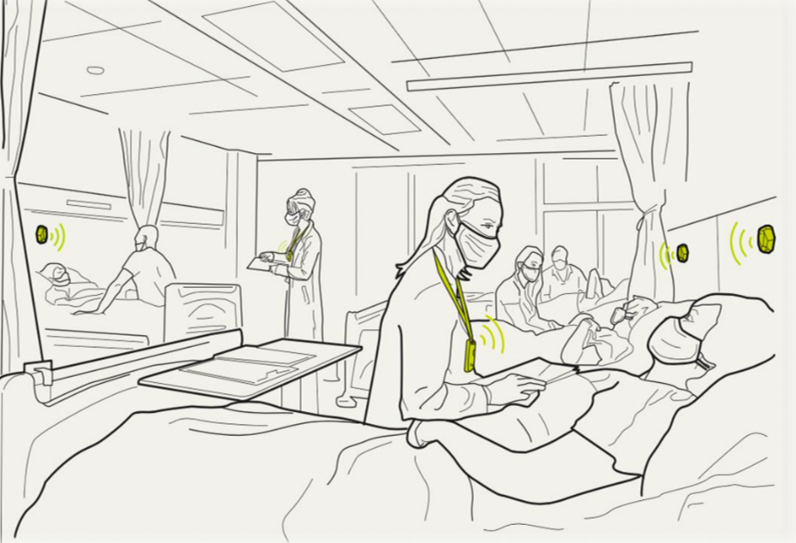Press Release
Johns Hopkins Researchers Tap Bluetooth Technology to Keep Health Workers Safe
With the world still very much in the grip of the COVID-19 pandemic, controlling the transmission of the SARS-CoV-2 virus among front-line health professionals remains a critical priority. And with hospitalizations surging across the country, outbreaks in medical settings are of particular concern because they could lead to reduced staffing and limited care when it’s needed most.
Experts note that while there is obviously an increased risk for health workers caring for patients with the disease, the greatest risk may come from their own colleagues or patients in the early stages of unsuspected infections when the amount of virus in an infected person’s blood is high.
Researchers at the Johns Hopkins Applied Physics Laboratory (APL) in Laurel, Maryland, the Johns Hopkins University School of Medicine in Baltimore, and Estimote — a New York technology startup building a sensor-based analytics and engagement platform — are exploring the use of Bluetooth Low Energy beacons with ultra-wideband capabilities to study the ability of health workers to socially distance in care settings.
“Understanding where and when high-risk interactions are occurring will be key to implementing interventions that reduce the likelihood of transmission events,” said Briana Vecchio-Pagán, a bioinformatics scientist in APL’s Research and Exploratory Development Department, who is supporting this work in the Lab’s National Health Mission Area.
Johns Hopkins Medicine and APL worked together on a 2018 study on the use of beacons to monitor infection transmission in medical settings by tracking health care providers’ interactions with patients and surfaces, such as hand-sanitizing stations and in restrooms. The researchers also sought to understand how pathogens traveled with these interactions, and used genomic sequencing to characterize relative levels of pathogens on different people and surfaces.
“Our pilot study demonstrated that these data types can be leveraged to identify personal hygienic practices and interaction patterns that lead to increased likelihood of transmitting or acquiring an infection in a clinical setting,” explained Vecchio-Pagán. “As COVID-19 began to spread, we saw the potential for this technology to help us specifically understand personal interactions, and even for contact tracing.”
This year, as part of an effort funded by the U.S. Centers for Disease Control and Prevention, the team is using these wearable technologies to explore interactions and adherence to social distancing recommendations among health care workers at the Johns Hopkins Hospital.
“We are looking at qualitative data from observations of different areas of the medical unit, semi-structured interviews of staff and interaction data from staff wearing beacons to highlight ‘high-risk’ areas and times on the unit,” explained Dr. Sara Keller, a clinical associate in infectious diseases at the Johns Hopkins University School of Medicine and the principal investigator. “As each method has its strengths and weaknesses, combining all three will assist us in finding the true barriers to social distancing.”

